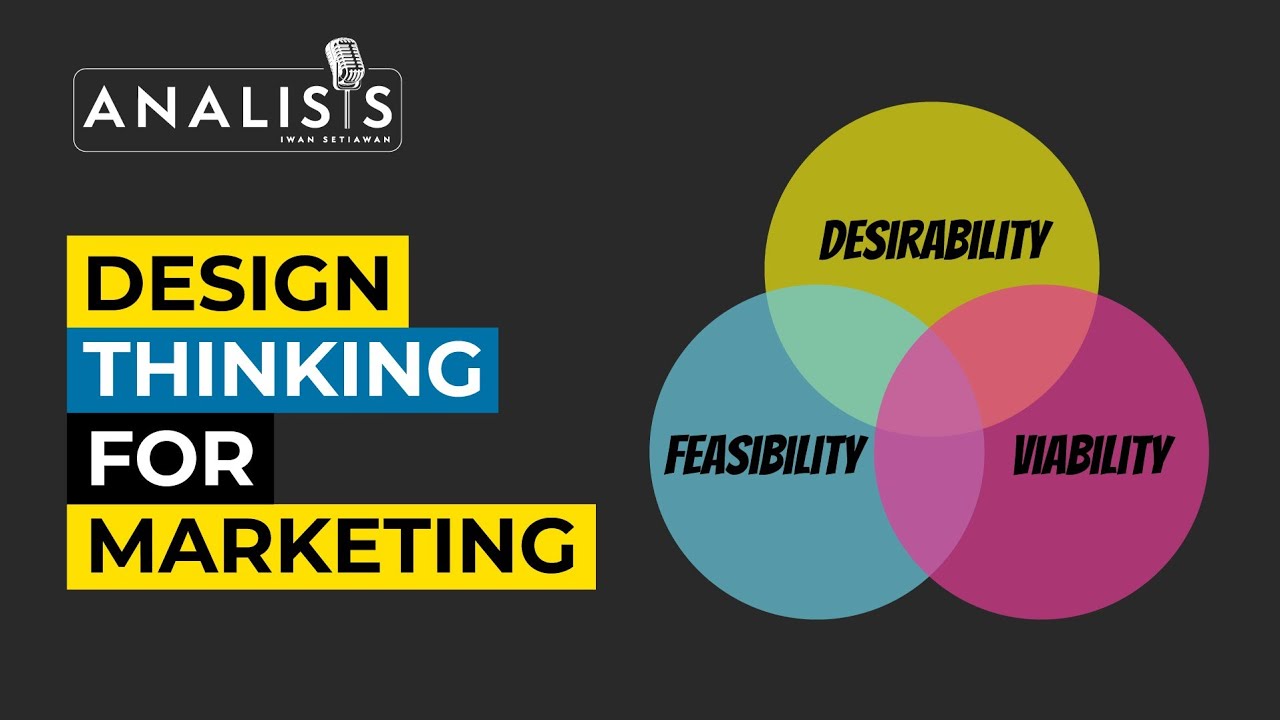4. Design Thinking: Prototype
Summary
TLDRThe video discusses the fourth stage of the design thinking process: prototyping. This phase involves creating mock-ups or models of products to test ideas and validate solutions. Prototypes come in various forms, including paper models, wireframes, and high-fidelity versions, depending on the project. The purpose is to gather feedback and explore whether the proposed solution meets user needs. The video emphasizes embracing failure, iterating on designs, and learning from prototypes, which may require revisiting earlier stages of the design process. Ultimately, prototyping is about refining ideas through feedback and experimentation to deliver effective solutions.
Takeaways
- 😀 Prototyping is an essential phase in the design thinking process, where a tangible version of the idea is created to test with users.
- 😀 Prototypes serve as mock-ups that help ensure the identified problem is being solved and the right problem is being addressed.
- 😀 The prototyping phase allows for testing, iteration, and gathering feedback to refine the design.
- 😀 Failure is an integral part of the prototyping process—things will not always work, and that’s an opportunity to pivot and improve.
- 😀 Iteration is key in prototyping: multiple versions of a prototype are created to explore different solutions and ideas.
- 😀 The learning gained from prototypes might require revisiting earlier stages of the design thinking process, such as empathy or ideation.
- 😀 Prototypes can take many forms, including low-fidelity mock-ups, wireframes, paper prototypes, animatics, and high-fidelity working models.
- 😀 High-fidelity prototypes can evolve from low-fidelity paper models to fully functional versions, such as mobile apps or services.
- 😀 Prototypes help inspire users and collaborators by putting something tangible in their hands to explore and provide feedback on.
- 😀 Prototyping allows for real-world testing of ideas, ensuring that the design works in practical scenarios (e.g., walkthroughs for services, or mock-ups for physical products).
Q & A
What is the purpose of the 'prototype' phase in the design thinking process?
-The purpose of the 'prototype' phase is to create a tangible mock-up of the product or service being developed. This allows designers to explore and test whether the identified problem and proposed solution are valid, while also gathering feedback on what works and what doesn't.
Why is it important to create prototypes in the design process?
-Prototypes are important because they allow designers to test their ideas with real users, providing an opportunity to explore functionality, gather data, and refine the product based on feedback, ensuring that the final design meets user needs effectively.
What forms can prototypes take, and how do they differ?
-Prototypes can take various forms, including paper prototypes, wireframes, low and high-fidelity prototypes, animatics, and walkthroughs. The choice of form depends on the type of product being designed, whether it's a mobile application, website, service, or physical object. Low-fidelity prototypes are basic and inexpensive, while high-fidelity prototypes are more developed and closer to the final product.
What does 'iteration' mean in the context of prototyping?
-Iteration refers to the process of creating multiple versions or variations of a prototype. It emphasizes that design is a continuous process of refinement and improvement, with each iteration building upon the previous one based on testing and feedback.
How does failure play a role in the prototyping phase?
-Failure is an integral part of prototyping. Designers must be comfortable with things not working as expected, as this provides valuable insights and learning opportunities. Failure helps designers identify flaws and iterate toward better solutions, ultimately improving the final product.
What is the significance of testing prototypes with users?
-Testing prototypes with users is crucial for gathering real-world feedback. It helps determine whether the design addresses the user's needs and solves the problem effectively. It also provides insight into how users interact with the prototype and what improvements are necessary.
What are the benefits of using low-fidelity prototypes in early stages of design?
-Low-fidelity prototypes are quick, inexpensive, and flexible, making them ideal for early-stage testing. They allow designers to rapidly explore ideas and concepts without investing significant resources, enabling faster iterations based on user feedback.
How does prototyping contribute to the overall design thinking process?
-Prototyping is essential in the design thinking process because it helps bridge the gap between ideas and actual solutions. It allows designers to experiment, visualize their concepts, and gather insights that refine their understanding of the problem and solution, often leading to revisiting earlier stages like empathy or ideation.
What is the difference between low-fidelity and high-fidelity prototypes?
-Low-fidelity prototypes are simple, basic, and often paper-based, used to explore and test early concepts. High-fidelity prototypes, on the other hand, are more polished, functional, and closely resemble the final product in terms of design and user interaction.
What types of products or services might require a walkthrough as part of prototyping?
-Walkthroughs are particularly useful in service design, especially when testing processes or interactions in new services. For example, redesigning a public service process, like a TSA screening procedure, would benefit from a walkthrough to assess its effectiveness and user experience.
Outlines

此内容仅限付费用户访问。 请升级后访问。
立即升级Mindmap

此内容仅限付费用户访问。 请升级后访问。
立即升级Keywords

此内容仅限付费用户访问。 请升级后访问。
立即升级Highlights

此内容仅限付费用户访问。 请升级后访问。
立即升级Transcripts

此内容仅限付费用户访问。 请升级后访问。
立即升级浏览更多相关视频

Lima Tahapan Design Thinking | CIAS QuickFix with Dr. Indrawan Nugroho

Belajar Design Thinking dan Penerapan di Marketing - ANALISIS #49

Beda Design Thinking, Critical Thinking &Creative Thinking | CIAS QuickFix with Dr. Indrawan Nugroho

LBD | Proses (Kreatif) Desain

The Design Thinking Process Broken Down Step-by-Step

Engineering Design Process Overview
5.0 / 5 (0 votes)
